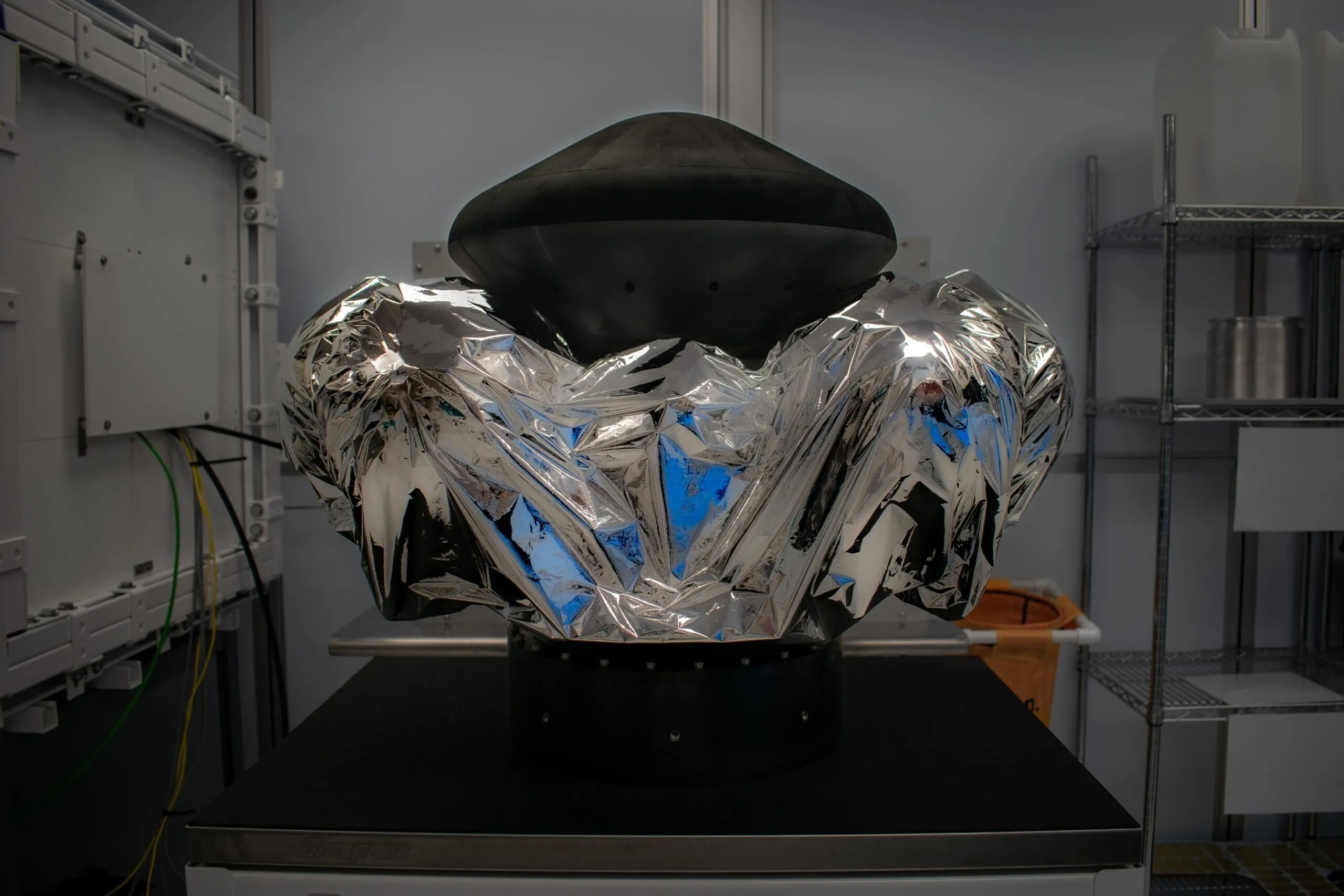6.05.2025

Inversion Space’s demonstration reentry capsule before its launch on the SpaceX Transporter-12 rideshare. Credit: Inversion Space
WASHINGTON — Startup Inversion Space says its first flight of a reentry vehicle was “profoundly valuable” even though the vehicle did not reenter.
Inversion Space said May 1 it had completed the flight of its Ray vehicle, launched as part of SpaceX’s Transporter-12 rideshare mission in January. The spacecraft was a technology demonstrator for the company, testing systems it plans to use for its future Arc reentry vehicle.
Original plans called for Ray to spend several weeks in orbit testing out its systems before performing a controlled reentry, splashing down in the Pacific off the California coast. But in a statement posted to social media, the company said that reentry was no longer possible because of a propulsion system malfunction.
“The final milestone, controlled re-entry, was not executed due to a short circuit in a component (which occurred on-orbit) that prevented the deorbit engine from igniting,” the company stated, adding that it was able to identify and replicate the problem with hardware on the ground.
The company did not disclose when the problem was identified but said it used the “extended time on orbit to complete supplemental mission objectives, gaining further operational experience and insights.” The spacecraft did perform two maneuvers in mid-April to slightly lower and then raise its orbit, but didn’t state if that involved the same propulsion system that would have been used for deorbiting.
The company did not respond to questions about the deorbiting failure and when the spacecraft’s orbit would gradually decay. Ray is currently at an altitude of 514 kilometers, giving it an orbital lifetime of at least several years.
Despite the failure of Ray to demonstrate a controlled reentry, Inversion Space still considered the mission largely successful. “Ray’s mission was profoundly valuable, delivering substantial technical validation and invaluable real-world experience for the team,” the company stated, citing work testing the spacecraft’s hardware and software.
“With Ray’s mission complete, the entire team now turns its focus to Arc, Inversion’s fully autonomous re-entry vehicle which will enable rapid, precision delivery from space,” it added. Inversion raised $44 million in November 2024, which it said would fund the company through the first flight of Arc, then planned for some time in 2026.
Inversion is one of several companies that are working on systems to return cargo from space. Varda Space Industries flew its second mission, W-2, on the same Transporter mission and Ray. That capsule returned to Earth in Australia Feb. 28, and the company launched its third mission, W-3, on Transporter-13 March 15.
In Europe, Atmos Space Cargo launched its first reentry vehicle, Phoenix, on SpaceX’s Bandwagon-3 rideshare mission April 21. The spacecraft reentered as planned about two hours after launch, but a late change in reentry location hindered the company’s efforts to collect reentry data.
Another European startup, The Exploration Company, launched its first reentry demonstrator, Nyx Bikini, on the inaugural flight of the Ariane 6 last July. However, the rocket’s upper stage was unable to perform a final burn needed for the reentry, stranding Nyx Bikini in orbit, still attached to the upper stage. The company, which raised $160 million in November 2024, is planning a second mission that will launch as soon as this summer on a SpaceX rideshare mission.
Quelle: SN
